How to Test ParrotSec Linux on a Mac with Parallels Desktop Lite
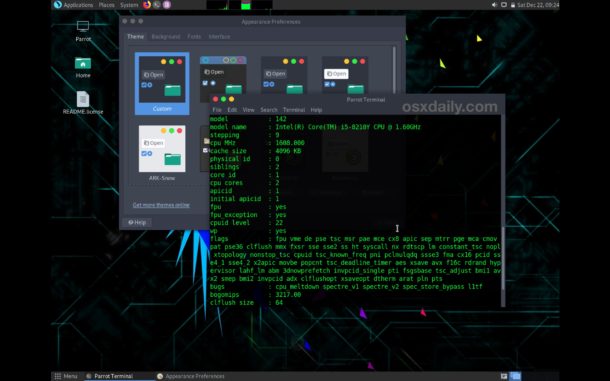
Advanced Mac users who are interested in the world of Information Security (InfoSec) can easily test out ParrotSec Linux in live boot mode by using a virtual machine.
In this particular walkthrough, we’ll show you how to quickly get ParrotSec running in live mode within the free Parallels Desktop Lite app, but if you want to try this with VirtualBox, VMware, or Parallels, you could do that just as easily too.
For some quick background; ParrotSec, or Parrot Security OS, is an increasingly popular infosec / security centric Linux distribution based on Debian, and it comes ready-made with a variety of security features and forensic tools. With a full suite of utilities for penetration testing, security research, digital forensics, vulnerability assessment, cryptography, software development, and anonymizing web browsers and privacy protection, ParrotSec can offer a simple to setup look into the world of tools and resources used by information security professionals.
This is obviously aimed at very advanced users, but because of how virtual machines work, just about any tech savvy Mac user can test out the ParrotSec operating system within a self-contained virtual machine, without having an impact on the underlying Mac operating system. You can simply toss the ISO into Parallels Desktop Lite and it boots to play around with, and you can just as simply shut down the Parallels Desktop Lite virtual machine and delete the ParrotSec ISO file and it will be removed from the computer completely. No need to partition any drives, format any disks, dual boot, etc.
How to Run ParrotSec Live on Mac with Parallels Desktop Lite
Parallels Desktop Lite is free to download, as is ParrotSec. Getting the live mode to boot within Parallels is quite easy, here’s all you need to do:
- Get Parallels Desktop Lite free from the Mac App Store
- Now get ParrotSec free from parrotsec.org, for the tutorial here we’re using the free Home Edition 64bit ISO, which is 1.8 GB. You can download the security centric build or other builds if you want
- Run Parallels Desktop Lite and under “Create New” select the option to ‘Install Windows or another OS from a DVD or image file’
- Parallels Desktop Lite should find the freshly downloaded ParrotSec ISO file (labeled Debian GNU/Linux Parrot-*.iso), so select it then click Continue to boot
- At the Parrot home boot menu, choose “Live Mode” to boot into the ParrotSec desktop experience (or select another boot option if desired)
- In a few moments you’ll be at the ParrotSec desktop in a live boot mode, where you can explore and play around with some of the tools available, as of this writing, the ParrotSec live username is “live” and the live password is “toor”
- When finished, shut down the Parallels virtual machine or quit the app to leave ParrotSec
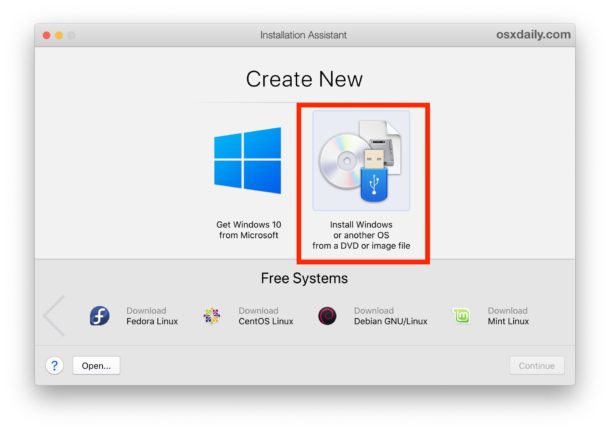
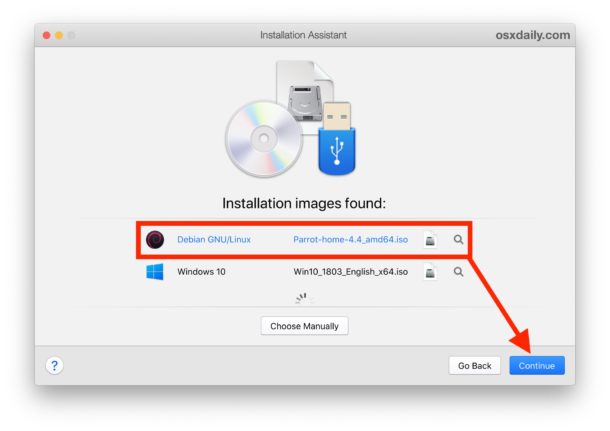
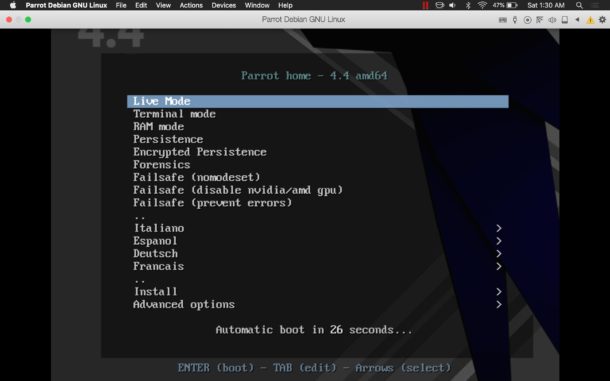
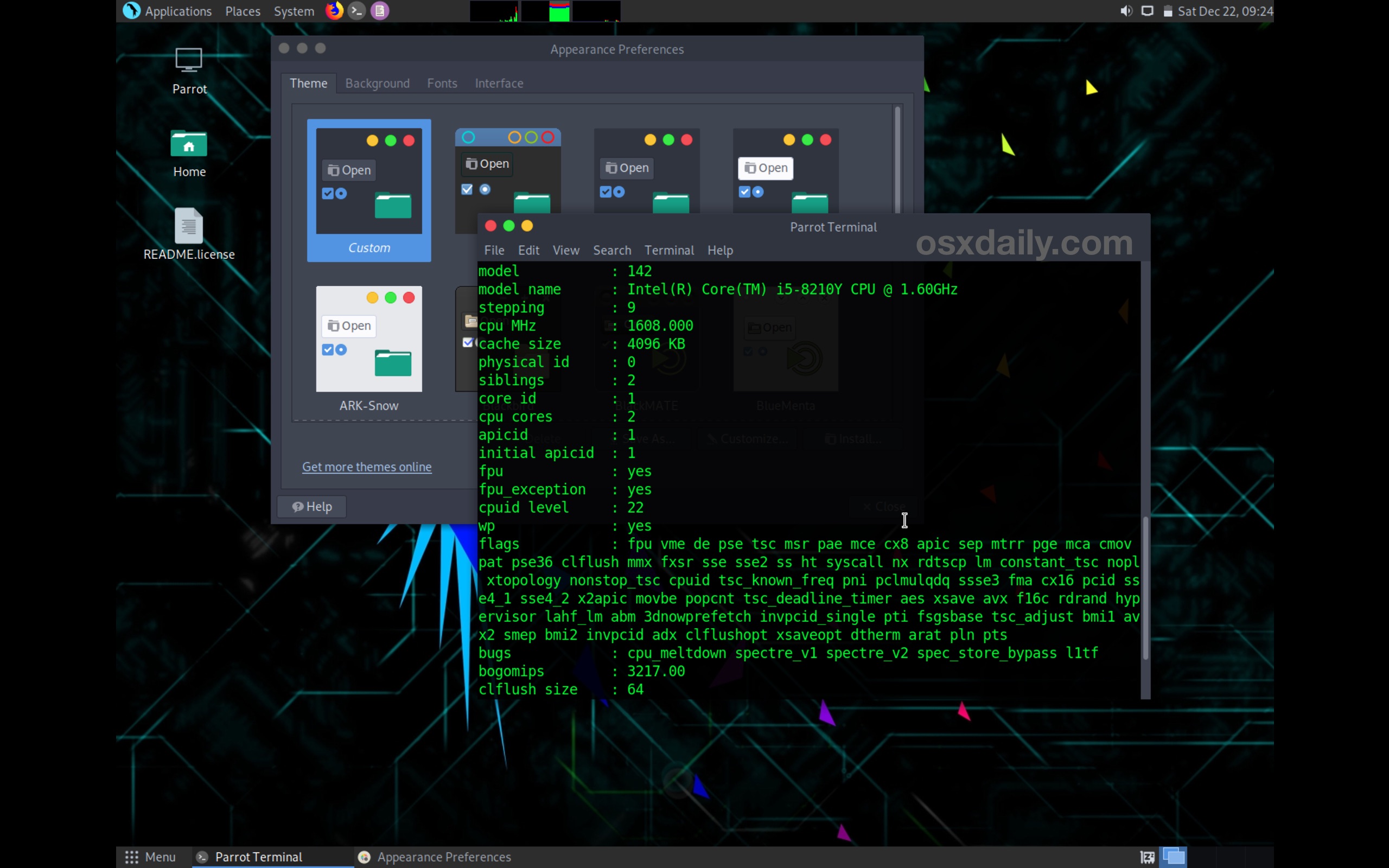
Remember this is a virtual machine, so the performance is not going to be anywhere close to what you’d expect if running system software natively on actual hardware. But for the curious, it should still be fun to explore and experiment with.
If you toyed around with ParrotSec and decided you have no use for it, you can just delete the ISO file you downloaded and that’ll be that. You could also remove Parallels Desktop Lite if you’d like, but it’s a handy app to have around for virtualizing various Linux and MacOS releases.
You can also use VirtualBox (free), VMware (paid), or Parallels (paid), but for our purposes here we are using Parallels Desktop Lite because it’s extremely simple. Parallels Lite is also cool because the free version also allows you to run MacOS Mojave in Parallels Desktop Lite, or MacOS High Sierra and Sierra in Parallels Desktop Lite too, as well as various other Linux distributions. You will have to pay to use Windows with Parallels, but if you’re committed to virtualizing Windows and want to use free software you can get preconfigured Windows 10 with Microsoft Edge virtual machines or simply install Windows 10 into VirtualBox too, whichever works for your needs.
This is obviously for Mac (though you can certainly use the same ParrotSec ISO on any other computer as a virtual machine), but if you’re an iOS user and you’re feeling left out, you could always ssh into a computer running ParrotSec, or if you’re adventurous you could try and build your own environment natively with something like iSH Linux shell on iPad or iPhone. That’s far beyond the scope of this particular article though.
If the topic of virtual machines interests you, you might enjoy reading and exploring our other virtual machine articles which cover virtualizing Mac OS, Windows, Linux, Android, and much more. And likewise if the topic of tech security fascinates you, then browse through our security related articles where you’ll find some interesting security tips and information for Mac and iOS.


Any idea on M1, M2?
Paul,
This approach for linux and MacOS is no longer viable. With the latest version of Parallels Desktop lite (v. 1.4.0), you must enter a subscription with no ability to choose the Linux or other OS.
There is a long painful thread on the Parallels form (https://forum.parallels.com/threads/parallels-lite-now-asking-for-subscription.346429/#post-850187) which describes Parallels change of policy.
Phooey on them!
Oof that’s an unfortunate recent change.
VirtualBox it is, then!